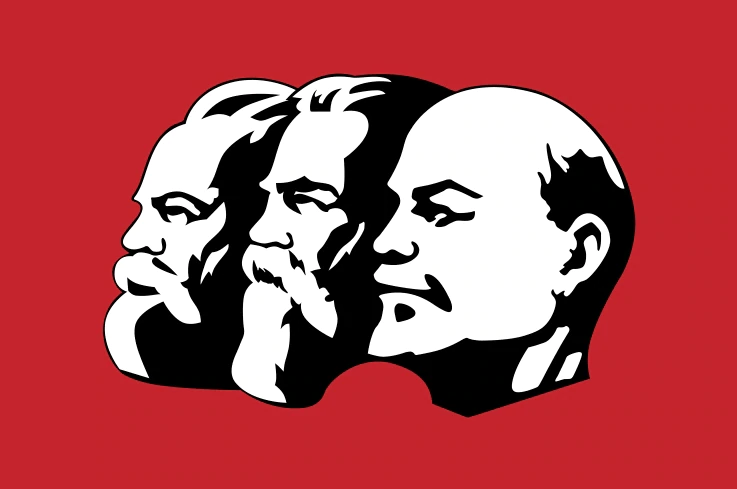m (Improved lede. There's a devastating lack of references) Tag: Visual edit |
mNo edit summary Tag: Visual edit |
||
| Line 1: | Line 1: | ||
[[File:Marxism-leninism symbol.png|thumb]] | [[File:Marxism-leninism symbol.png|thumb]] | ||
'''Marxism-Leninism''' is a [[Science|scientific]] world outlook based on [[Historical materialism|materialist conception of history]], [[Marxism|Marxist political economy]] and [[Leninism|Leninist]] conception of [[imperialism]], the methods, party organization principles and strategy and tactics of [[revolution]] developed by [[Vladimir Ulyanov|Vladimir Lenin]]. Marxism–Leninism was also the guiding theory behind national liberation and revolutionary movements in [[Africa]], [[Asia]] and [[Latin America]]. | '''Marxism-Leninism''' is a [[Science|scientific]] world outlook based on the [[Historical materialism|materialist conception of history]], the [[Marxism|Marxist political economy]] and [[Leninism|Leninist]] conception of [[imperialism]], the methods, party organization principles and the strategy and tactics of [[revolution]] developed by [[Vladimir Ulyanov|Vladimir Lenin]]. Marxism–Leninism was also the guiding theory behind national liberation and revolutionary movements in [[Africa]], [[Asia]] and [[Latin America]]. | ||
After the success of the [[October Revolution|Russian revolution in 1917]] and the establishment of the [[Union of Soviet Socialist Republics|Soviet Union]] in 1922, many [[Communist party|communist parties]] around the world began to adopt Marxism-Leninism as their political line, and was the guiding theoretical framework behind the [[Korean revolution|Korean]], [[Vietnamese revolution|Vietnamese]], and the [[Chinese revolution|Chinese]] revolutions. | After the success of the [[October Revolution|Russian revolution in 1917]] and the establishment of the [[Union of Soviet Socialist Republics|Soviet Union]] in 1922, many [[Communist party|communist parties]] around the world began to adopt Marxism-Leninism as their political line, and was the guiding theoretical framework behind the [[Korean revolution|Korean]], [[Vietnamese revolution|Vietnamese]], and the [[Chinese revolution|Chinese]] revolutions. | ||
Revision as of 02:32, 17 June 2021

Marxism-Leninism is a scientific world outlook based on the materialist conception of history, the Marxist political economy and Leninist conception of imperialism, the methods, party organization principles and the strategy and tactics of revolution developed by Vladimir Lenin. Marxism–Leninism was also the guiding theory behind national liberation and revolutionary movements in Africa, Asia and Latin America.
After the success of the Russian revolution in 1917 and the establishment of the Soviet Union in 1922, many communist parties around the world began to adopt Marxism-Leninism as their political line, and was the guiding theoretical framework behind the Korean, Vietnamese, and the Chinese revolutions.
Marxism-Leninism made significant contributions to the critique of the imperialist development of capitalism and developed its own theoretical categories related to the revolutionary praxis and political party organization, such as vanguard party and democratic centralism. Today, Marxism–Leninism is one of the theoretical foundations of currently ruling communist parties in the socialist states of China, Cuba, Laos and Vietnam.
Origin of the term
Lenin never used the term "Leninism", nor did he include his ideas in the term "Marxism-Leninism". However, his ideas developed out of classical Marxist thought, which was seen by the Bolsheviks as Lenin's advancement of Marxism, and by others as the opposite.